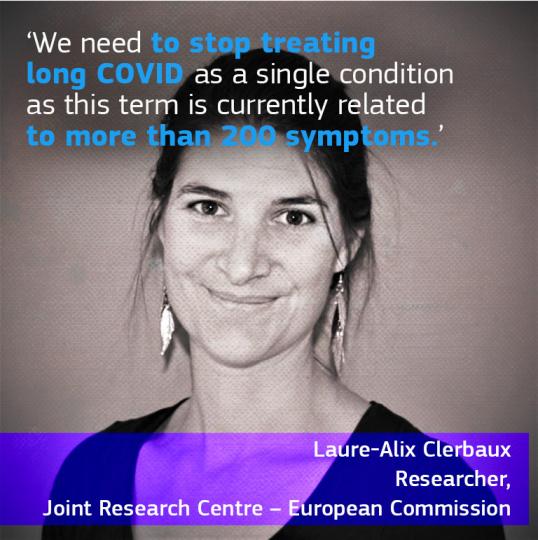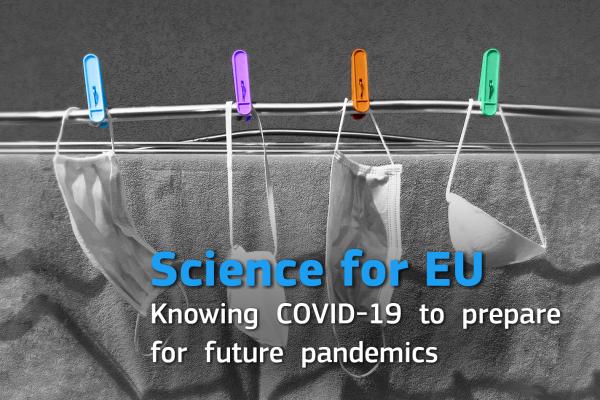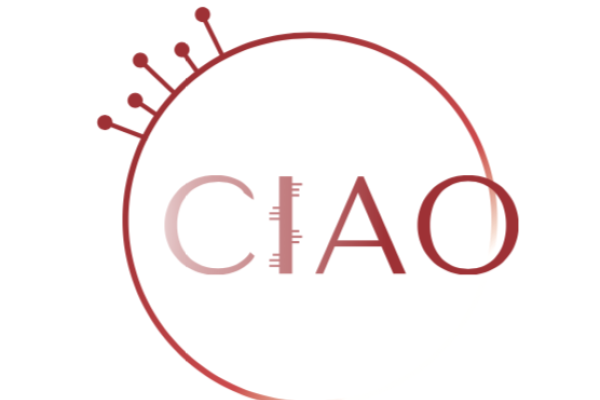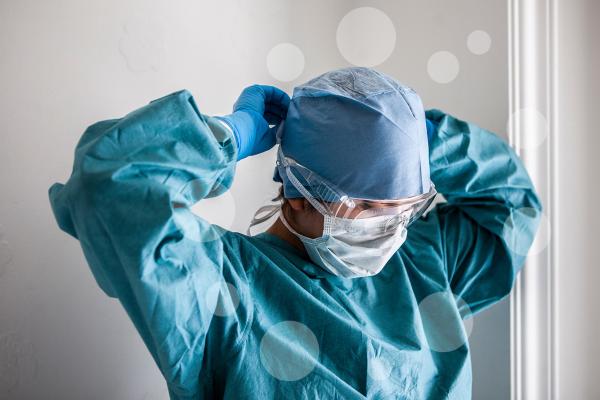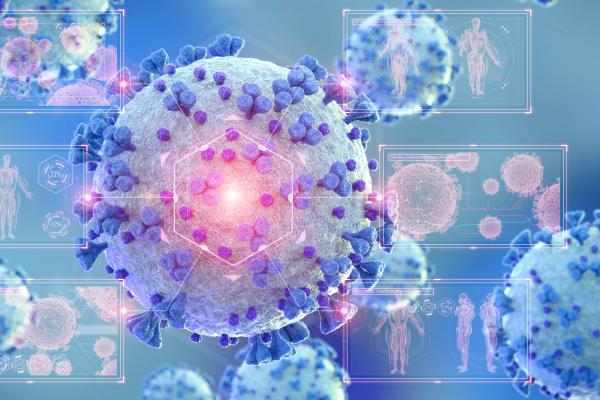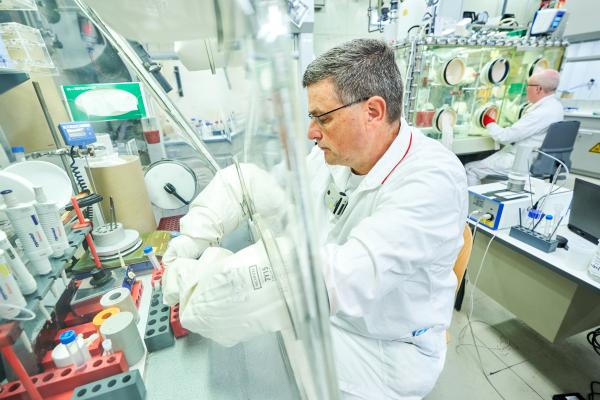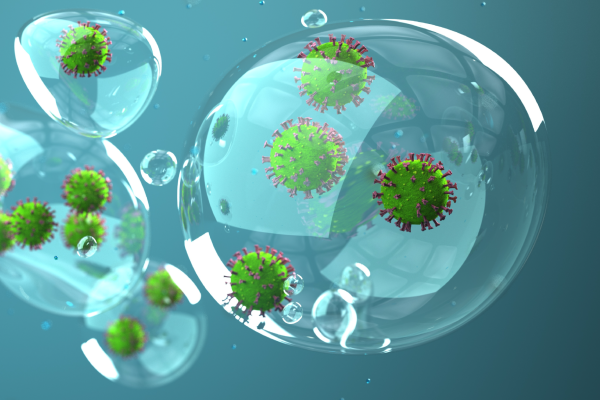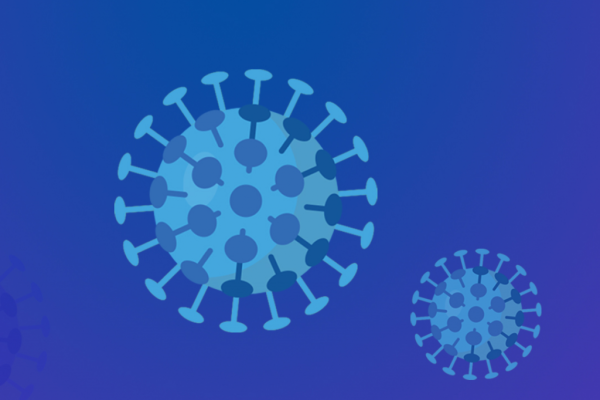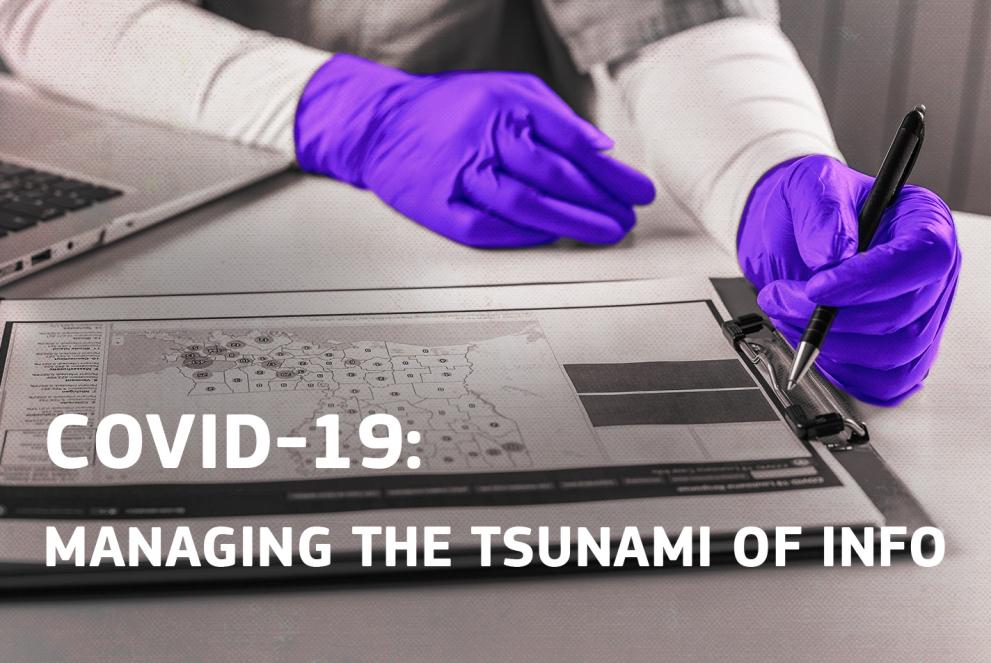
Three years. The world has been struggling for three years with a common denominator: COVID-19. Although vaccination has reduced its severity, COVID-19 is still a global public health issue.
Aiming to make sense of the tsunami of biological information emerging about the disease, the JRC has been steering an interdisciplinary project called CIAO to model COVID-19 pathogenesis (the process by which an infection leads to a disease) using a novel knowledge management approach. Running for over 2 years now, CIAO has attracted over 80 scientists from 50 organisations worldwide with a wide range of complementary expertise and interests.
We discussed the project and its achievements with JRC lead scientist, Laure-Alix Clerbaux.
How was it to embark in an interdisciplinary project?
Interdisciplinarity is essential to tackle complex diseases such as COVID-19 but it is not always straightforward. One challenge to interdisciplinarity is to find a common language. Scientists with great expertise in their own specialisation do not use the same jargon linked to the knowledge generated by others.
Within CIAO, we succeeded in bringing together people from many different backgrounds such as universities, governmental institutions, hospitals or industries, being toxicologists, biologists, immunologists, nutritionists, neurologists, pharmacologists... The success of CIAO is that we were able to use a “common language” acting as a conceptual mediator between us all.
What has been your secret in achieving such success?
The key to the whole project has been to exploit a framework called Adverse Outcome Pathways (AOP), proposed by me, my colleague Clemens Wittwehr and external collaborators, such as Penny Nymark. This approach is very well known in toxicology (the study of adverse effects of chemicals). This knowledge management tool helps to understand what happens in a body from the very beginning of the infection up to the clinical outcomes. The AOP can be seen as a domino effect: all the steps described in the pathway are essential. If one effect is not triggered, the sequence of events will not end up with the adverse outcome.
It is the first time that this framework was applied to a viral disease like COVID-19. In that sense, the project was totally exploratory. In CIAO, we applied this framework to make sense of all the data available regarding different aspects of the disease, not only those related to the well-known respiratory symptoms: Why are some people more vulnerable than others? Why do some people recover their smell after experiencing COVID-19 while others not? What is the implication of the gut in COVID-19?
Can this framework speed up the understanding of a disease like COVID-19?
I am not sure that speed up is the best term. The AOPs provide a practical way of systematically organising and integrating existing knowledge. This not only allows that knowledge to be more widely used, but it also helps to identify gaps and guide further research. We believe that organising the knowledge on COVID-19 will improve the integration of the mountains of data available. Scientists studying COVID-19 use different methods and models, as well as their own vocabulary and jargon. The AOP framework helps to make sense of all the information and to make it understandable by many. In that sense, a well-organised knowledge accessible to others can speed up our understanding of the disease.
You studied the factors associated with severe COVID-19. What were your main conclusions?
There is a lot of clinical evidence that outcomes are markedly different between patients. Older people, males, people with comorbidities before the infection such as pre-existing heart conditions or people more exposed to air pollution are more susceptible to severe or fatal COVID-19. In our study, we investigated eleven known risk factors of COVID-19. We examined the data existing in the scientific publications explaining how these risk factors influence the mechanisms underlying the disease to ultimately modulate the clinical outcomes. With this approach, we identified current knowledge gaps and proposed biomarkers to identify high-risk patients.
You studied the loss of smell experienced by COVID-19 patients. What did you find there?
You have two profiles of patients with anosmia. There are people losing their smell for a short time while for others, it seems to be permanent. It was therefore important to understand the mechanisms behind.
Based on data published by other scientists, we identified that for the temporary loss of smell, the virus infects the basal cells present in the olfactory neuroepithelium, a tissue located at the roof of the nasal cavity that is involved in our capacity to smell. The death of those cells disorganises the olfactory epithelium that affects the olfactory neurons, meaning they don’t work properly anymore. But these basal cells can regenerate like our skin or hair. So once they regenerate, the ability to smell returns to normal.
If the virus enters the brain where neurons transform information related to odours, the story is different as neurons do not regenerate. You will suffer from long-term anosmia.
As we can see, it is not the same cell type, so you will not treat the patient the same way. Understanding the mechanisms behind this adverse outcome is important for the patients.
CIAO also looked at our gut. What do we know about COVID-19 and the gut microbiota?
The gut microbiome is a set of bacteria, fungi, viruses and small parasites that naturally reside in all our intestines, and which support normal gut function. Many COVID patients showed alteration of their gut microbiome. One question is whether this problem is a risk factor or a consequence of COVID. We investigated both scenarios. First, in the study I mentioned earlier, we explored the data currently available supporting that an alteration of the gut microbiota before a COVID infection, due to obesity or pre-existing inflammatory disease for example, is a risk factor to develop a more severe COVID.
Secondly, we looked at the evidence related to the scenario when you initially have a “healthy” microbiota and you get infected by SARS-CoV-2, will the virus alter your microbiota? This is then a consequence of the infection and not only a risk factor. Based on scientific publications, we identified different mechanisms potentially explaining how SARS-CoV-2 infection can modify our gut microbiota. For example, another JRC study, not related to CIAO, showed that SARS-CoV-2 may replicate in the bacteria of our guts. More data are needed to confirm this hypothesis. Handling these two notions differently can help the development of preventive and therapeutic strategies.
Interestingly as well, alteration of the gut microbiota persists in some patients who recovered from the respiratory effects of COVID, suggesting that gut microbiota might be implicated in long-term sequelae of COVID-19.
Talking about long COVID, what do we know so far?
What we call long COVID or post-acute COVID-19 syndrome is rapidly emerging across the globe. But there is a need to stop treating long COVID as a single condition as this term is related for the moment to more than 203 symptoms. The current scientific consensus or “definition” is that “I don’t feel like I felt before I had COVID”. We miss a universal definition because for the moment we do not understand the mechanisms leading to long COVID. We need to maintain our unprecedented degree of scientific collaboration with unified interdisciplinary actions to collect and characterize a large number of long COVID cases. This will help us to understand pathological mechanisms and to identify which factors render some individuals more susceptible to develop long COVID. And in that context, I believe that the AOP framework and the work already done within CIAO might have a central role to play!
External scientist Penny Nymark (Environmental Medicine at Karolinska Institutet in Sweden)
How was it to be part of this interdisciplinary project steered by the JRC?
It was an interesting experience and a very friendly environment to operate in! Despite the fact that none of us in the coordination had met before the pandemic we managed very well to communicate and collaborate in a very efficient manner, largely I think thanks to the JRC and its employees who are open minded and communicative, and who have a good number of contacts to central players in different fields.
How unique this experience was for the scientific community?
To me it was quite unique, both in terms of collaboration without having met in person before and in terms of the structure of the project, which was highly exploratory. It was refreshing to not be fixed in deliverables and to be able to speak freely in a manner that is not always possible in traditional call-response projects.
Has this interdisciplinary project allowed the scientific community to progress more quickly in understanding a complex disease like COVID 19?
I would believe so, especially in terms of advancing the understanding among researchers working in silos on the different aspects of the disease and the pandemic as a whole. I think the project allowed for aligning communication across different actors/researchers in terms of terminology and understanding of molecular aspects all the way up to the individual outcome of the disease. This was largely enabled by the AOP framework, which proved highly useful to this cross-disciplinary communication and collaboration. Also, it provided a basis and a template for other similar endeavours to apply the AOP framework in new innovative manners.
Details
- Publication date
- 23 February 2023
- Author
- Joint Research Centre
- JRC portfolios

